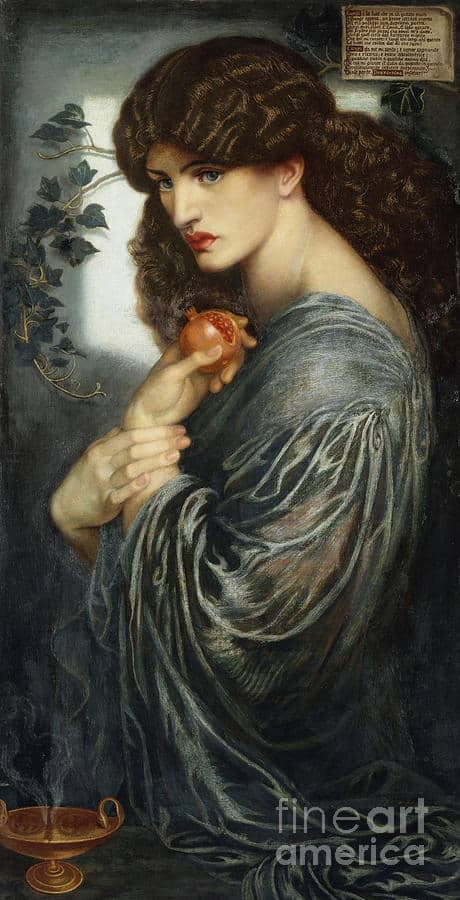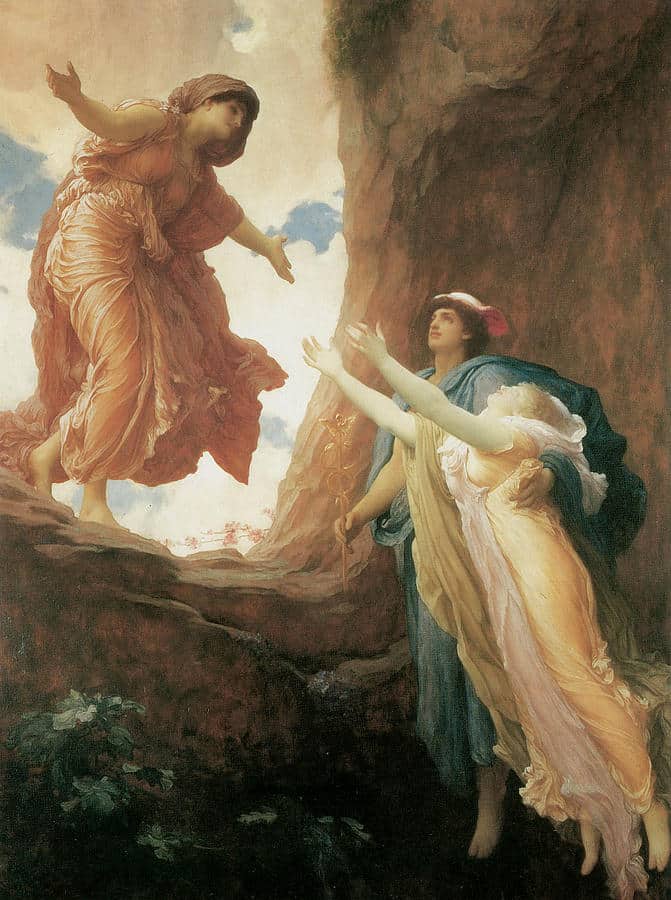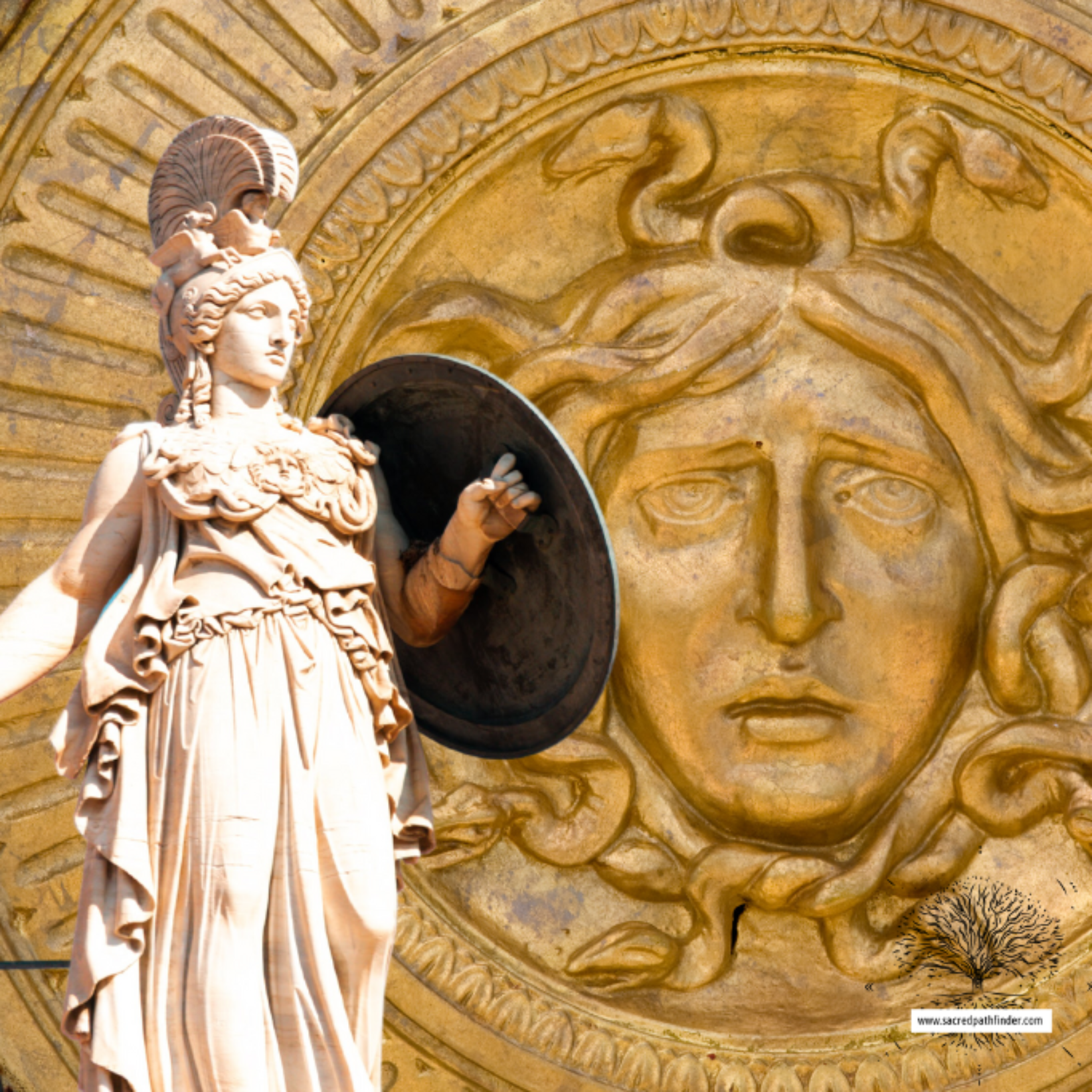Goddess Persephone’s tale of life, death, and rebirth has captured hearts and minds for millennia. Her story teaches deep lessons about the cycles of nature and our own transformations.
In this article, we’ll delve into Persephone’s mythology, symbols, and meaning.

Abducted by Hades and forced to spend half the year in the Underworld, Persephone’s resilient spirit and connection to cycles of renewal continue to inspire.
Who is the Goddess Persephone?
In Greek mythology, Persephone is the goddess of Spring and nature, and is kown for brining blooms to Gaia. She is the daughter of Demeter, goddess of agriculture and fertility.
Ancient Greek festivals and mysteries like the Thesmophoria and Eleusinian Mysteries honored and commemorated the story of Persephone as a goddess of rebirth and the cycle of seasons.
As an underworld goddess and Hades’ wife, she takes compassion on souls that enter the afterlife and plays a role in welcoming female ghosts and spirits.
However, she is also portrayed as a formidable queen capable of instilling fear in wayward souls.
Symbols commonly associated with Persephone include pomegranates, flowers, vegetation, torches, etc. to represent her roles as a goddess of spring and queen of the underworld.
Some artistic depictions also show her wearing a crown or holding a scepter to signify her royal position.

The Persephone Myth
The earliest version of the Persephone myth appears in Homer’s Odyssey, written around the 8th century BCE. Later Orphic traditions add details like Persephone willingly eating the pomegranate seeds.
Ovid fully recounts the myth in his Metamorphoses in 8 CE. According to Ovid, Persephone was abducted by Hades while picking flowers. Demeter frantically searched for her daughter for nine days. On the tenth day, Hecate told her that Persephone was abducted.
Demeter was so distraught she caused all vegetation to perish. Zeus intervened and demanded Hades return Persephone.
Before leaving, Hades deceived Persephone into eating pomegranate seeds to ensure she would have to return.
It’s worth mentioning that some tales explore the idea that Persephone chose to eat the pomegrante with the understanding that she would spend half of her time in the underworld.
All versions of the myth explore dual themes of death and rebirth.

Goddess Persephone’s Connections to the Seasons
Due to her cyclical story, Persephone became strongly associated with the seasons in ancient Greek religion.
Her time on earth with mother Demeter corresponded to Spring and Summer, when crops and flowers bloomed.
Her descent to the Underworld brought Autumn and Winter, when plants withered and died.

Persephone embodied the regeneration of nature each year when she returned from the dead.
The Eleusinian Mysteries used Persephone’s story to represent the eternal cycles of life, death, and rebirth. Worshippers believed her tale promised their own spiritual purification and afterlife.
Persephone’s Connection to Pomegrantes
Persephone’s connections to pomegranates derive from the myth of Hades tricking her into eating their seeds to compel her return to him. As a result, the pomegranate became a key symbol of Persephone.

In ancient Greek culture, pomegranates symbolized fertility, birth, and the regenerative blood of life. Their red juice and abundance of seeds evoked feminine creativity and procreative power. Splitting open the pomegranate revealed a womb-like core that reinforced maternal themes of the myth.
Today, slices of pomegranate remain a common offering left on Persephone’s altars and sacred spaces. The fruit represents the goddess herself and the cycles of death, rebirth, and transformation she oversees.
Persephone’s Role in the Underworld
Although a prisoner of Hades initially (according to most myths), Persephone embraced her role as Queen of the Underworld over time. She ruled alongside Hades over the dead and passed judgement on wayward souls. Persephone welcomed initiates of the Eleusinian Mysteries to prepare them for a pleasant afterlife.
Due to her own experience of leaving a life of innocence, Persephone felt sympathy for those undergoing the transition from living to dead. Despite Hades kidnapping her, she came to genuinely love him as her partner. Together they governed the Underworld and maintained balance between realms.

Persephone empowered the spirits of the dead, teaching them to accept impermanence and surrender old identities. She ruled not through harshness, but wisdom, patience, and compassion for the struggles of transitioning.
How to Invoke Goddess Persephone’s Energy
If you want to connect with Persephone, creating an altar is a great way to honor her and invite her presence into your life. Include symbols from her myth that represent life, death, and rebirth:
– Statues or images of Persephone
– Pomegranates and flowers – especially roses, lilies, and narcissus
– A bowl of dirt or plant a pot of seeds
– Coins or jewelry to symbolize the riches of the earth
– Torches, candles, or lanterns to guide you through darkness
– Crystals like garnet, smoky quartz, onyx, and clear quartz
Say prayers, light candles, and make offerings to Persephone on the Spring Equinox as she returns from the Underworld. Tend the seeds you’ve planted and nurture them through cycles of dormancy and blooming to reflect her story.
How to Use Ritual to Connect to Persephone
In addition to creating an altar, rituals are another great way to invoke Persephone’s power. Here are some rituals to try:
– Around the Spring Equinox, create a ritual bath or cleanse your space to symbolize Persephone’s return and the earth’s renewal. Include flowers, seeds, and essential oils like lavender.
– On the Fall Equinox when Persephone descends, hold a ritual to honor cycles, meditate on letting go, and saying goodbye to what you’ve outgrown.
– Perform a pomegranate ritual by eating one mindfully, meditating on Persephone’s story, and visualizing seeds of intention taking root in your life.
– Light two candles – one white and one black – to represent Persephone in both the upper and underworld as you make an offering.
– Write down something you want to purge or let die, and burn it or bury it in the earth to release it.
What Greek Goddess Would You Like Us to Spotlight Next?
The compelling goddesses of Greek mythology have fueled creativity and meaning for thousands of years. Their stories illuminate the many archetypes of femininity.
Let us know which goddess you’d like to see featured in a future article!
Make sure to check out our other articles on Greek mythology and feminine divine figures. Connecting to these stories helps unlock our own inner wisdom.
And be sure to subscribe to our newsletter to get alerts on our latest goddess content.
Thanks for reading!
Please share your thoughts in the comments.












